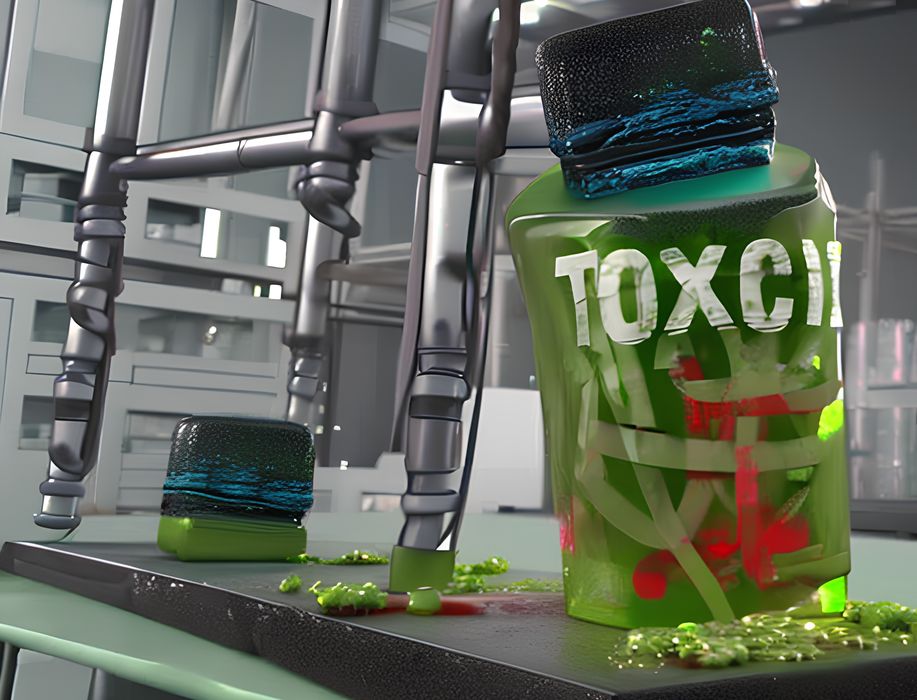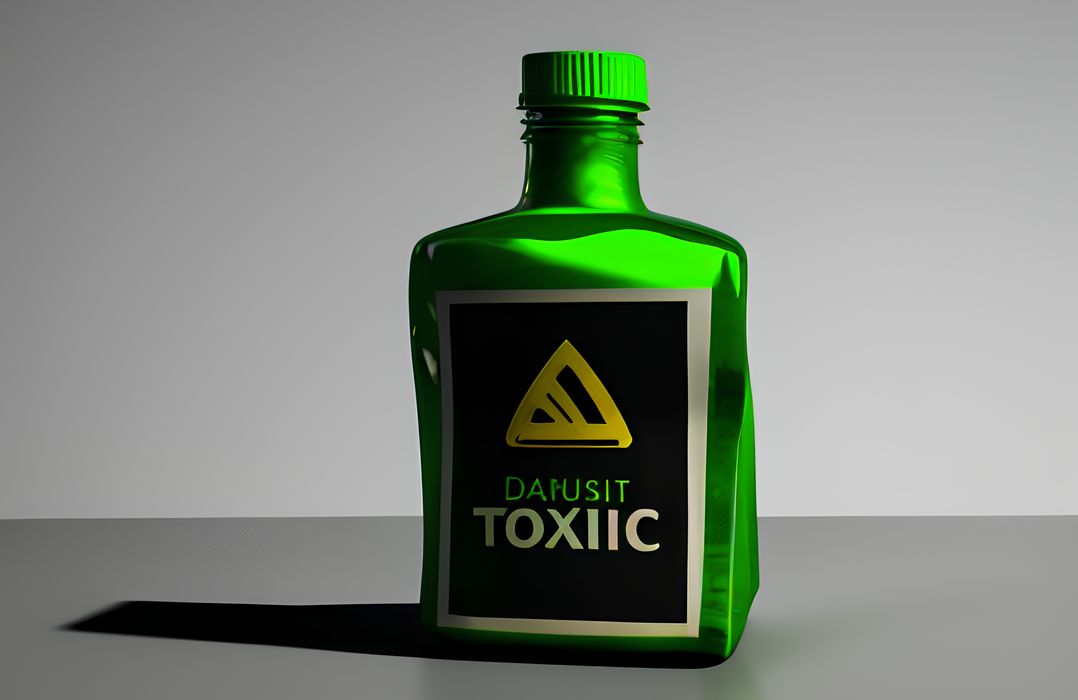
This week’s question answers a somewhat disturbing question about resin safety.
We received this enquiry from a Fabbaloo reader who was distressed about the use of resin 3D printers in the public library where they work. They wished to remain anonymous for reasons you will understand after reading the enquiry:
Anonymous writes:
“I am writing because I can’t find the information that I’m looking for regarding resin printers in public spaces. I am suspecting that folks have not really considered this too much. I’m looking for realistic safety guidelines because I’ve seen everything from full on Hazmat to some guy running it in his bedroom.
Our library just ran its first resin print yesterday. Today my co-worker was using our UV light wand to cure the minimal amount of residue on his gloves. Our makerspace is in our library space. We have a two air filters in our general space but the makerspace doesn’t have a dedicated filter or a fume hood or windows. Our air is shared. In the past two days, when I am at my desk the skin on my face has been burning and my eyes watering profusely, and I suspect it is the SLA resin. However, the makerspace manager has been good about keeping things contained and there is no odor. I am the only one having this problem so far.
Anyway, I had concerns about the safety of having an SLA printer in a public space without dedicated ventilation, or even an eyewash station. I have a background in molecular biology so I am used to working in labs that take chemicals seriously and use fume hoods and post clear signs about what kind of chemicals are in use.
When I complained I was told that my coworker is using the safe resins and that he had done his research, but I happen to know that I did the research and that he only paid attention after I suggested that our space was not appropriate.
Is SLA really not a big deal? Am I overreacting? I am in favor of maker culture, but I really hate being exposed to noise, fumes, and more in our small space all the time.”
My short answer here is that resin 3D printing in a public space is probably a bad idea, but let’s look at some of the details.
Why Resin 3D Printers Can Be Toxic

First, the technology and issues are the same regardless of whether the machine and materials are situated in lab, makerspace, factory, home or library. It’s just chemistry. This means that the same precautions must be undertaken.
What are we protecting from? It’s the toxins in typical 3D printer resins that must be avoided. These are included in the mixture to assist in the polymerization when the resin is exposed to UV light.
These materials are almost always considered toxic, but toxic is not a “yes-no” thing. It’s more like a scale. Anything can be toxic if enough is consumed. For example, don’t try eating a gram of caffeine, you will be very sorry.
However, the amounts of toxins in 3D printer resin are sufficiently high to warrant concern and that is why the regulators mark these products as “Toxic”.
Don’t be fooled by videos showing people freely handling wet resin 3D prints with bare hands. Those people will eventually be very sorry they did so, as the effects take time to appear.
Toxic Resin Effects
The effect of the toxins varies, but generally what seems to happen is this: someone is repeatedly exposed to the toxins, either by air or through skin contact. Eventually a sufficient amount is absorbed by the body and it begins to react.
Symptoms can include precisely what the anonymous enquirer above stated: skin itching, rashes, burn-like sores, rough throat and breathing, etc.
Once someone has reached that level of toxicity, there doesn’t seem to be a solution and the individual has to remove themself from exposure situations or wear significant personal protective equipment (PPE).
This is not a good situation to be in, and easy to fall into: there are no apparent effects until there are some. Then they don’t go away. That’s why we always strongly recommend using PPE when using or being near resin 3D printers.
Protection from Toxic 3D Printer Resin
Relevant PPE includes:
- Nitrile gloves when handling resin or wet printed objects
- Sleeves to prevent skin exposure
- Safety glasses to prevent drops in eyes
Sometimes even a respirator should be used, as the resin toxins are airborne. That’s what you’re smelling.
Another approach that should be combined with PPE is ventilation. The toxic fumes emitted by open resin can travel widely and it’s best practice to get rid of them.
There are two approaches to this: ventilation and fume extraction.
Ventilation means you have a method of blowing the fumes outside, usually with an external vent and powered fan. The ventilation system should be sufficiently powerful to truly evacuate all toxic air. An open window may help a bit, but is usually not sufficient.
Some facilities are not able to install external ventilation for physical or legal reasons, and they must resort to fume extractors. These are standalone or tabletop devices that vacuum up fumes from laser cutters, soldering stations and 3D printers and run them through a series of complex filters to catch the particles and toxins. They’re often far more expensive than the 3D printer being used, however.
As you can see, there’s considerable things involved in protecting from 3D printer resin toxins. But there’s more.
Resin 3D Printer Operating Procedures
A resin 3D printer operator MUST use a consistent set of safe procedures to operate the machine. For example, should they be pressing buttons on the control panel with wet gloved fingers? How do you keep the tools from getting covered in toxic resin? What about the tabletop where the resin 3D printer is located?
The answer to all these and more questions is to establish a very specific order of operations for running the machine. For example, set up paper towels beforehand, don’t touch the panel except with clean fingers, wash the tools in IPA afterwards, etc.
I’ve seen makerspaces that don’t do this properly and very, very quickly everything — and I mean everything — is rapidly coated with toxic resin.
These steps are all doable by a consistent operator but absolutely CANNOT be done by the general public that use a machine occasionally. For this reason I strongly recommend that any library with a makerspace designate a specific, trained, PPE-wearing operator. No one else should touch the machine.
That’s in addition to proper ventilation.
Non Toxic 3D Printing Resin
There’s one more option that should be considered: Carima now offers what they call “Non Toxic Resin”. I have tested the CMYK Resin, and it does print very well. I continue to use my normal resin safety procedures with this non toxic resin, however. It just significantly reduces the risk of exposure.
Librarian Advice on Resin 3D Printing
Anonymous, it seems that your library has designated a specific operator, and that’s a very good thing. What’s not good is the ventilation situation. As you report, you (and possibly others) are affected by the resin.
As time passes, the toxins in the air will be gradually be absorbed by the library staff and visitors, and they too may be affected. What happens in a year when other staff report unexplained rashes and sore throats from working at the library? What happens when an individual already sensitive to these toxins visits the library? Could there be lawsuits in your future?
I double-strongly recommend that you stop using the resin 3D printer until proper ventilation is in place. The ventilation could be either external venting, or a proper fume collector, as described above. There is no way resin fumes should be emitted in a public place like a library, especially if there is no ventilation.
It may be time to approach your management and explain that a serious toxic exposure is taking place in the library and that steps must be taken to resolve the situation. The evidence of the seriousness is in fact your own symptoms, which others may also be experiencing, but not realize what’s happening.
A safety-oriented review of resin 3D printing operating procedures would also be a very good thing to do.
For other librarians reading this, please review your safety situation if your makerspace is using resin 3D printers. You may be in a similar situation and not yet realize it.

In addition to Kerry’s advice, people concerned about the toxicity of a 3D printer’s materials should consult the relevant Material Safety Data Sheets and speak with the printer and material providers.